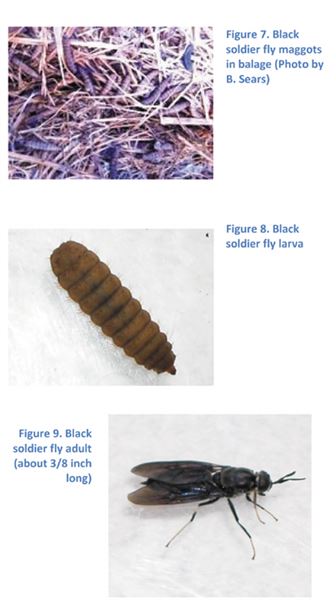Maggots Are Sign Of Wet Hay
DR. LEE TOWNSEND
LEXINGTON, KY.
Large numbers of black soldier fly maggots were found recently in wrapped alfalfa/orchardgrass/clover balage from a first cutting taken last year. They were throughout a line of bales, rather than just on the exposed ends. This suggests that the infestation began on wet hay that had lain on the ground for some time before being baled and wrapped. These insects are not likely to be a problem in hay cut under favorable conditions and wrapped within hours of baling.

Black soldier fly maggots can develop in most any accumulation of moist, decaying organic matter. Females lay batches several hundred eggs so lots of maggots can develop where breeding matter is accessible.
Development from egg to adult normally takes about 3 weeks but can be require several months if larval densities are high and/or food quality is low. Mature larvae leave the breeding site and pupate in the soil.
Black soldier fly larvae, like typical maggots, are legless but darker, flattened, and have a peg-like protruding head. They are very efficient recyclers of organic matter. Meal made from dried, ground larvae has been evaluated as food for fish and other animals.
Ingested calcium is converted to calcium carbonate and deposited in the outer covering of maggots. This allows them to survive harsh environments, such as an animal’s digestive system. Ingestion of many maggots with infested hay may at least cause discomfort to animals. Heavily infested hay may be unpalatable.
The adult resembles a wasp and has a buzzing flight but cannot sting or bite. It is rarely seen, even when larvae are abundant in an area.∆
DR. LEE TOWNSEND: Extension Entomologist, University of Kentucky